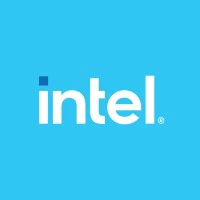Intel's Stock Faces Short-Term Gains But Long-Term Concerns Amid Market Volatility
Summary
As of October 9, 2024, Intel Corporation (INTC) closed at $23.46, revealing a slight 0.60% increase while facing a near-term resistance at $23.54, raising concerns of limited short-term upside potential and highlighting the challenges of its overvalued status and ongoing restructuring amidst fierce competition in the semiconductor market.
 Technical Analysis
Technical Analysis
Intel Corporation's (INTC) last close at $23.46 on October 9, 2024, reflects a modest increase of 0.60% from the previous closing price. The stock currently trades slightly below a near-term resistance level of $23.54, based on recent trading activity, with support established at $21.84. The Relative Strength Index (RSI14) is at 69, indicating the stock is approaching overbought conditions, which may suggest limited upside in the short-term. The current price is above the 50-day moving average of $21.50 but significantly below the 200-day moving average of $34.07, implying a bearish trend over the long-term. The MACD value of 1.42 signals a positive short-term momentum. With an Average True Range (ATR) of 4.36, significant price volatility can be anticipated in the near future.
Short-Term Outlook
For the next trading day, given the technical indicators and the proximity to resistance levels, Intel could see limited upside potential, with minor gains if it can break past the $23.54 resistance. The stock's upcoming earnings announcement on October 24, 2024, may inject increased volatility into the stock as investors position themselves for potential surprises. Looking into the coming week, attention should be given to market sentiment shifts and broader market movements which could drive stock performance.
Fundamental Analysis
Intel’s fundamental metrics paint a challenging picture. The stock’s elevated P/E ratio of 97.75 suggests it's priced for high growth but the accompanying earnings per share (EPS) of $0.24 indicates weak profitability compared to market valuation expectations. The firm’s market capitalization stands at approximately $100.31 billion, placing it within the large-cap category, which usually indicates stability but Intel's ongoing restructuring and competitive pressure might continue to weigh down its performance. Notably, the DCF valuation of about $1.30 per share indicates an overvalued status relative to the current market price.
Intrinsic Value and Long-Term Potential
Considering the intrinsic valuation using DCF, Intel appears significantly overvalued. In terms of market position, Intel is currently experiencing falters in its strategic pivot, with competitors like Nvidia and AMD capturing more market share. The narrative around its corporate restructuring and competition in the AI and semiconductor space further exacerbates the long-term concerns. Analysts' consensus centers on a median target price of $33.50 with a "Hold" sentiment, indicating potential upside but with risk considerations.
Overall Evaluation
Given the existing technical setup, intrinsic valuation observations, and ongoing restructuring challenges, Intel currently aligns more closely with a 'Hold' candidate. While short-term momentum may offer trading opportunities, the long-term potential remains tethered to the company’s ability to successfully execute its strategic plans and pivot within the competitive semiconductor landscape.



 Sign In
Sign In